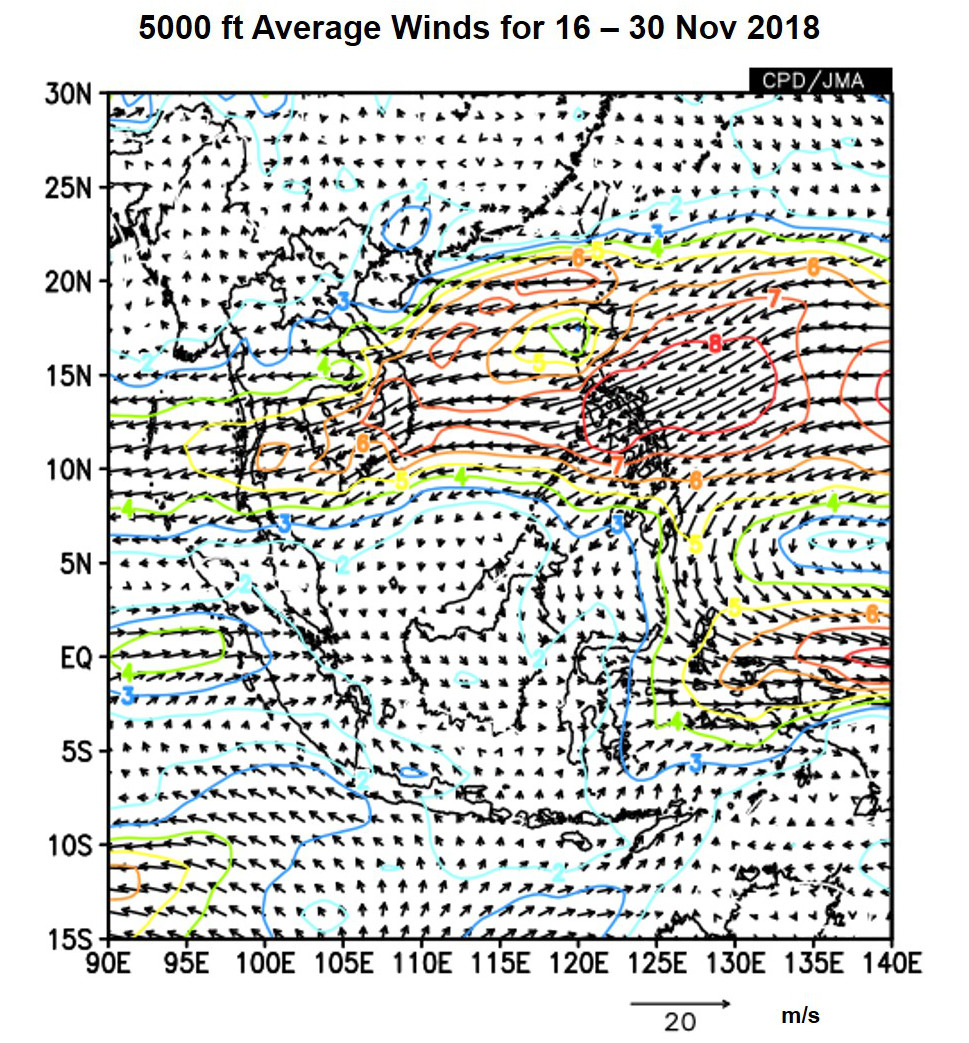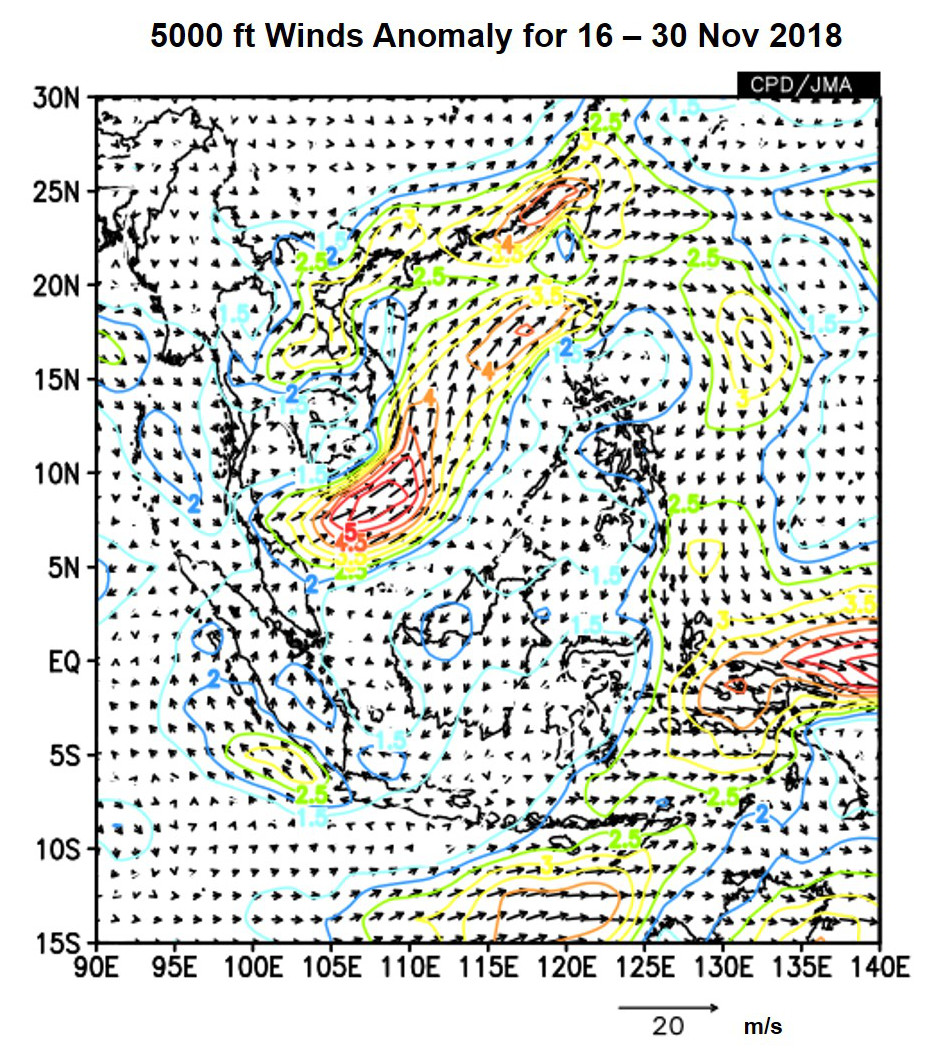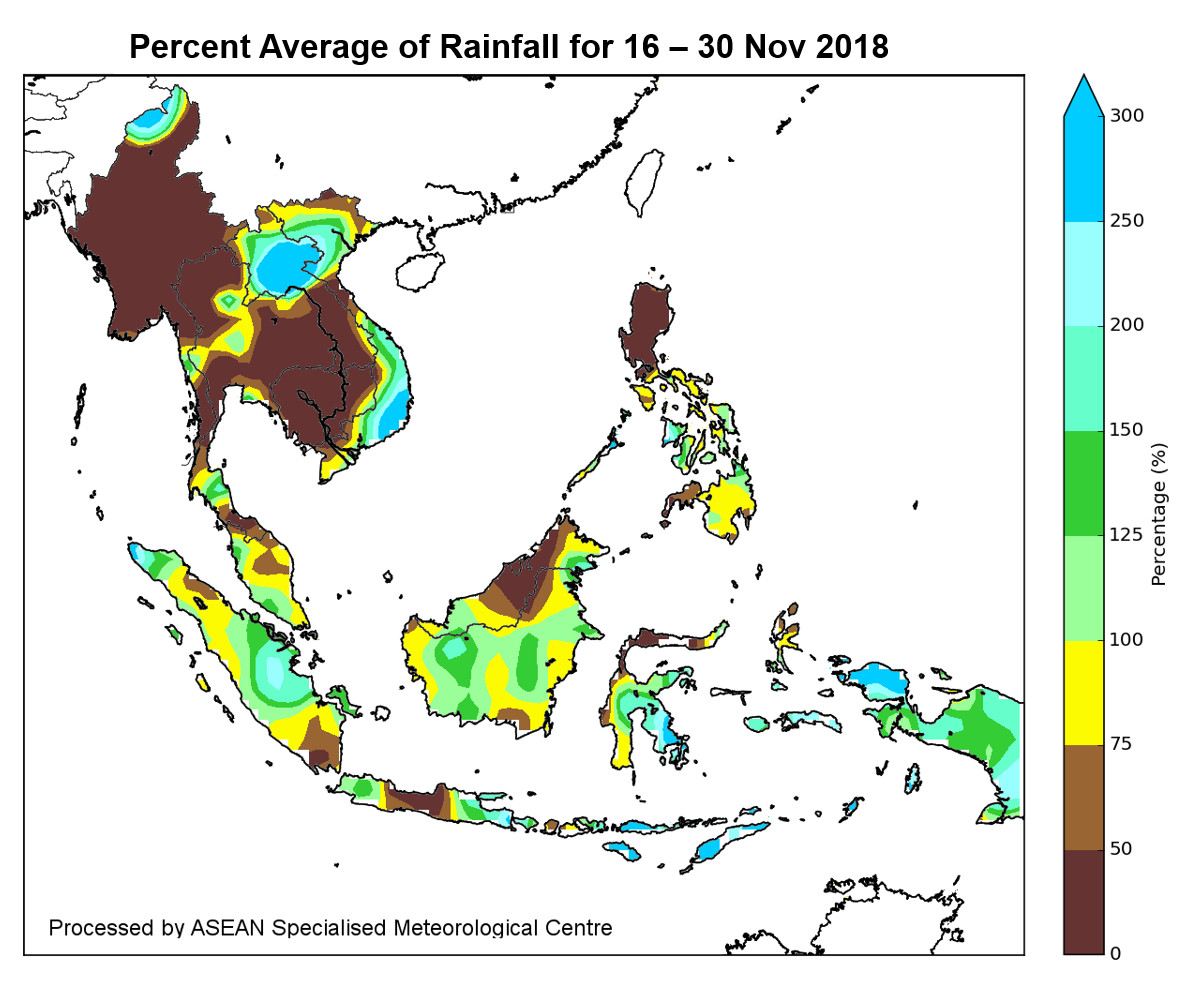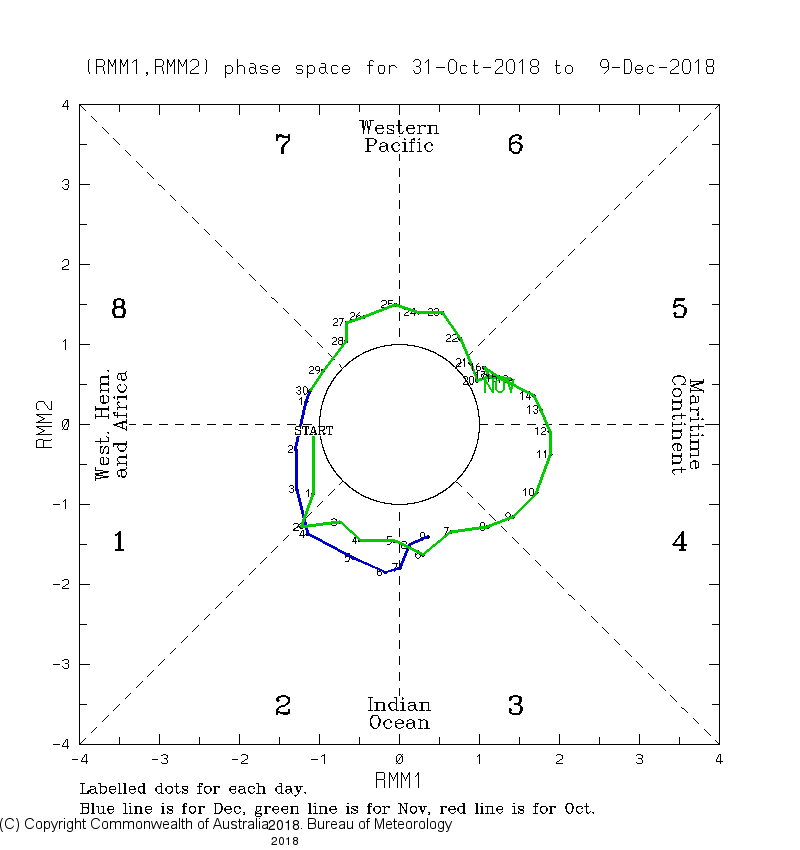Review of Regional Weather Conditions for Second Fortnight of November 2018
1. Review of Regional Weather Conditions for Second Fortnight of November 2018
1.1 Under prevailing Northeast Monsoon conditions, dry conditions set in over the northern ASEAN region. Rainfall was generally below-average for the northern ASEAN region, except in central Philippines and southern Viet Nam where tropical storms brought heavy rains, and the northern parts of Lao PDR and Viet Nam. Most parts of the southern ASEAN region received near-average to above-average rainfall.
1.2 The rainfall distribution and the percent of average rainfall for the second fortnight of November 2018 are shown in Figure 1 and 2.
Figure 1: Daily average rainfall for the ASEAN region in the second fortnight of November 2018. (Source: JAXA Global Satellite Mapping of Precipitation)
1.3 Tropical Storm Toraji developed off the east coast Viet Nam on 18 November and made landfall in southern Viet Nam on the same day. The tropical storm was short-lived and quickly dissipated thereafter. Typhoon Usagi first developed over the western Pacific Ocean on 18 November before tracking westward across the South China Sea. Typhoon Usagi made landfall on 25 November and brought heavy rains and strong winds to southern Viet Nam and Cambodia.
1.4 North-easterly and easterly winds prevailed over the northern ASEAN region under the Northeast Monsoon. However, there were south-westerly wind anomalies over the South China Sea due to the intensification of Typhoon Usagi over the area in the last week of November.


Figure 4: 5000 ft average winds (left) and winds anomaly (right) for 16 – 30 November 2018. (Source: JMA)
1.5 The tropical Pacific Ocean’s Nino 3.4 region sea surface temperature (SST) anomalies have crossed the El Niño threshold by a small margin and are at weak El Niño levels. However, most of the atmospheric indicators of El Niño/La Niña over the tropical Pacific have yet to show sustained El Niño characteristics.
Figure 5: The MJO phase diagram for Nov 2018 (green for November). The diagram illustrates the movement of the MJO through different phases, which correspond to different locations along the equator. The distance of the index from the centre of the diagram is correlated with the strength of MJO. When the index falls within the circle, the MJO is considered weak or indiscernible. (Source: Bureau of Meteorology)
1.6 The Madden Julian Oscillation (MJO) weakened slightly but continued to propagate eastward through Phase 5 – 8 during this period. The progression of MJO through Phase 7 – 8 could have contributed to the drier-than-usual weather over some parts of the region.






